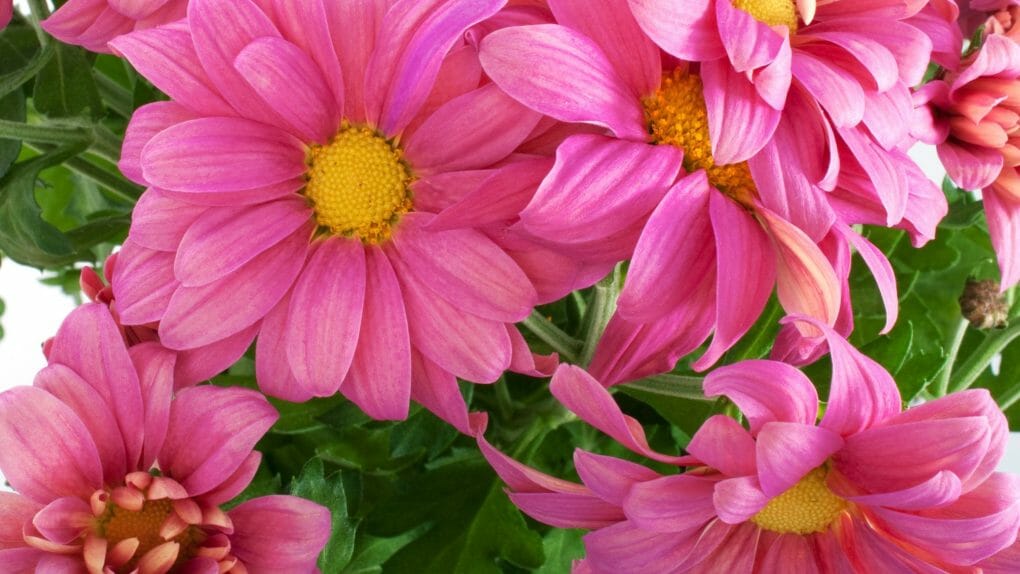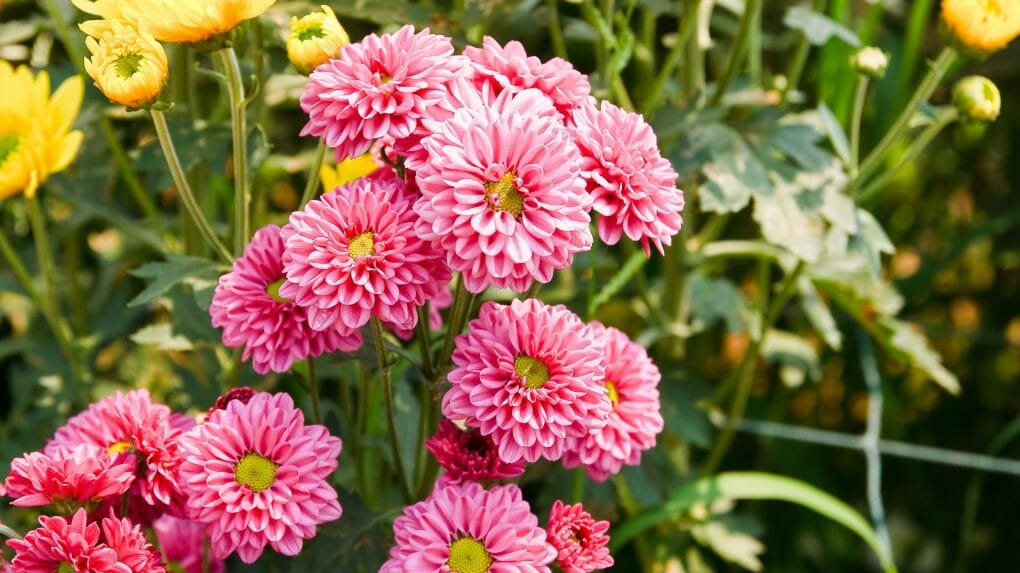How to Deadhead Chrysanthemums? A Help to Get More Blooms!
Deadheading is the practice of removing dead flowers from chrysanthemums to encourage more blooms in late summer and early fall. It can be done before or after flowering, but it’s best to do it shortly after so that the chrysanthemums don’t get too cold and suffer in winter. To perform Deadhead on chrysanthemums, ensure that you have a sharp knife and know how to handle it correctly. Remove all the blooms by slicing below the stem near where each flower grew from. Make sure to cut close to but not through the leaves. Cutting too deeply will cause damage beyond just removing the dead flowers. Finally, water your plants well following Deadhead for optimum results!

You may be hesitant to use garden shears on your mum’s plants, but deadheading is crucial to maintaining their health and improving their appearance. To maintain a compact, bushy plant and encourage the growth of new side shoots, prune and pinch your mums regularly.
Table of Contents
Proper Deadheading
In late spring or early summer, deadhead mums. Deadheading and other forms of pruning mums grown outdoors should be done between late spring and mid-summer. Right before flowering, the stems can be cut, and the flowers are given time to send out new shoots. Cutting back on deadheading during the colder months is another benefit of doing it when the weather is warmer.
Since mums grown in a greenhouse or indoors won’t be subjected to cold weather, deadheading can be done as soon as you notice dead growths.
- Identify faded or withered flowering plants. It is time to perform a deadheading inspection to determine which flowers and branches on your mum’s plant have faded. When healthy, mum flowers are orange or yellow, but when they’re dying or dead, they turn brown. Also, their petals are probably more papery and brittle than the healthy flowers on the plant.
- Use your fingers to pull off any faded flowers gently or you can use a sharp knife or a pair of scissors. Dead flowers on a mum plant are easy to remove if only a few of them exist. This is done by grabbing the mum stem below the dead flower and snapping it off.
- Since you can deadhead your mum all year long and not have to worry about exposing it to cold temperatures, this is the best method to use if you are growing your mum indoors or in a greenhouse.
- Shear off bouquets of wilted flowers. If any flowers on your mum plant have died, but the stalks look healthy and produce new buds, you can remove them in bulk with garden shears. Position the shears so that the blades are pointing down toward the dead flowers, and cut to remove all of the flowers from that cluster or section of the plant. To remove all the spent flowers, repeat the process.

Trying To Get More Flowers To Bloom
Deadheading means taking off dead or dying flowers from plants by pinching them off or cutting them off. It makes mums look better and bloom longer because new flowers grow to replace the old ones. After deadheading, the plants might not have as many flowers, though, because mums bloom most strongly at the beginning of the flowering season. You can use your fingers or a pair of garden pruners to remove the dead flowers from your mums.
Avoiding Bloomless Sticks
Some gardeners don’t like how their mums look after they’ve been deadheaded because the flowers don’t grow back, and only the stems are left. If you don’t like how it looks and want to make your plants look better until the new flowers come out, cut the stems of the old flowers about 5 inches below where they bloomed. This method has the same benefits as taking off only the old flowers because it encourages new growth and flowers and makes the plants look better. Some types of mums bloom early in the growing season, while others bloom later. Removing dead flowers and making your plants look better helps them last until the end of the growing season.
Adding More Bloom Time
Another way to help mums grow and keep them flowering longer is to pinch them. Mums tend to grow in a rounded shape. So, cutting off their new growth when it gets 6 or 8 inches long in the spring helps them make new branches and grow wider. When you cut back new growth, you eliminate the dominant flowering bud and let more growth hormones, nutrients, and water reach other parts of the plant. This makes the plant grow more evenly. Mums may take longer to bloom if you pinch them, but once they do, they will bloom longer and stronger than mums that haven’t been pinched.
Increasing the Length of Bloom Time
The growth of mums can be improved by pinching, extending the time they spend producing flowers. The growth habit of mums is known as a mounding growth habit, because of this, the new growth of the plants should be removed or pinched back to a length of between six and eight inches during the spring. This will encourage the plants to develop new branches and grow wider. The dominant flowering bud can be removed by cutting back new growth, allowing more growth hormones, nutrients, and water to travel to other parts of the plant, resulting in more consistent growth. It is possible that pinching will delay the onset of flowering in mums; however, once the pinched plants begin to bloom, they will flower for a longer period and with more vigor than other mums that have not been pinched.
Enhancing both the Blooms and the Culture
In addition to removing spent flowers and pinching back new growth, the best way to increase the number of flowers produced by your mums is to provide them with proper cultural care throughout the growing season. This includes exposure to sunlight and adequate moisture. In addition, apply a fertilizer with a ratio of 6-1-6 to your mums before their flowering and once more during the growing season. This will encourage more blossoms to form on your mums. Suppose you have early blooming mum varieties, such as those that bloom from the middle of summer to the end of summer. In that case, you should prune them back by four inches after their first flowering period to encourage other blossoms toward the end of the season. This will allow you to enjoy your mum for a longer time. During the winter, mums will typically turn black and die off. When that time comes, trim your mums to stand three to four inches above the ground. Their new plant growth will begin the following spring.
